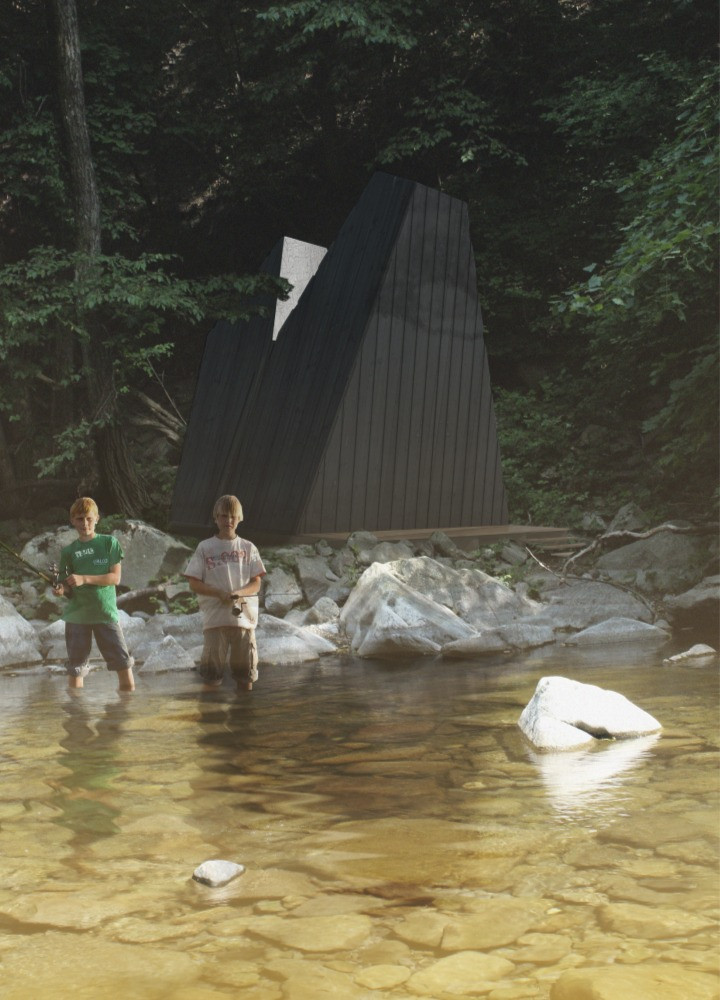5 key facts about this project
The Hand House meditation cabin is located at Ozolini farm in Latvia, providing a peaceful space for reflection and healing. Inspired by the Anjali Mudra, a yoga position symbolizing respect and focus, the design encourages a deep connection with nature and promotes a sense of well-being. This cabin serves as a retreat, allowing individuals to engage in mindfulness and self-discovery in a serene environment.
Structure and Materials
The cabin is built using Brettstapel panels, known for their strength and fire resistance, which also provide excellent thermal and acoustic properties. These panels are an environmentally friendly choice, as they do not contain harmful adhesives. The construction is rooted in traditional Latvian carpentry, which reflects local craftsmanship. The exterior is finished with burnt pine wood, utilizing a Japanese technique that helps protect against moisture and adds to the building's durability.
Interior Design and Spatial Layout
Inside, the Hand House emphasizes simplicity and practicality. The layout includes essential features such as a log bed, a basic kitchen, and a foldable table, optimizing the use of space. Natural light is an important element, pouring in through zenith openings and creating a bright, welcoming atmosphere. The entrance is designed with a pure white surface, softly dispersing light and offering a calm visual transition from the outside world.
Sustainability and Energy Efficiency
Sustainability is a key focus. The design incorporates energy-efficient systems, including solar panels on the roof that can power lighting for extended periods. Rainwater collection systems ensure a reliable and sustainable water supply for resident needs. These initiatives underline a commitment to environmentally friendly practices, setting a standard for future projects that strive for a balance with nature.
The cabin is elevated on a lightweight wooden column structure, reducing its impact on the local environment and preserving the views of the surrounding landscape. This elevated approach also encourages natural ventilation, enhancing the comfort of the indoor spaces and deepening the overall meditative experience.



























